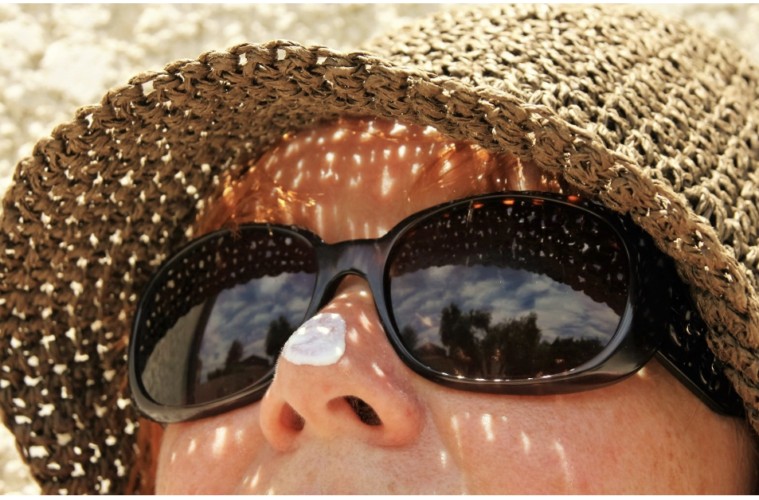The sun is beneficial for humans, but it also carries many risks. Sun exposure can cause various reactions and skin problems.
Read the article below so you can be more aware of all the risks the sun brings with it. Do not test your luck with your health. If you are feeling adventurous you can visit casino or NetBet Sport instead.
Below we will look at some of the most common sun dangers on the skin and some tips to protect yourself from it.
Photoaging
Photoaging is the premature aging of the skin caused by repeated exposure to ultraviolet UV radiation, either naturally from the sun or artificial sources, such as the solarium.
The skin, after constant exposure to the sun for several years, shows color changes – brown spots, wrinkles, arachnoid veins, and deep folds. Structural skin lesions appear on the most visible parts of the body, such as the face, lips, neck, arms, and chest.
It is nice to enjoy the sun, but it is better to expose yourself in moderation. Protect your skin, avoid sun exposure for hours (12 pm to 4 pm) when the rays are strongest, and seek shade as much as possible.
The damage may be reversible in the early stages but after a certain point the wrinkles, discoloration, spots, and other issues will be much more difficult to deal with. The best defense is prevention.
Sunburn
Light or excessive sun exposure can cause burns to human skin. The severity of the burn depends on the duration of exposure, the phototype of the person, the time and season, the altitude, the reflection, the sun protection, etc. In very light skin tones a sunburn can occur as fast as 20 minutes or even less. Higher altitudes are generally causing more sun damage. Prefer sun protection of 50 SPF or at least 30 SPF. Apply it 20 minutes before the sun exposure and remember to reapply as needed.
Clinically, the burn occurs 12 to 24 hours after exposure, but if it is excessive, it occurs much earlier. To avoid sunburn, apply the sunscreen appropriately, in large quantities, and regularly.
In addition, it is recommended to stay in a cool environment with light clothes, avoid sun exposure and drink plenty of fluids to keep the body hydrated.
Photosensitivity
Some drugs can cause this type of reaction as a side effect. Such drugs are antibiotics against urinary tract infections, acne or rosacea, some anti-inflammatory gels for muscle pain, and even some essential oils. Even some cosmetic and skincare products with substances such as retinol will make the skin more sensitive to the sun too. That is why they are better to be used at nighttime and sun protection must be applied throughout the day at all times.
If you are being treated, check the package leaflet for your medicine and consult a specialist.
If you have undergone laser dermatological treatment or peeling, be careful not to expose yourself to the sun and strictly follow your doctor’s recommendations.
Solar urticaria
It is a rare form of allergy, which is caused by hypersensitivity to sunlight. Sun urticaria needs a different diagnosis and treatment from the burn and appears with erythema, blisters, swelling, or itching on exposed parts of the body, in the form of rashes.
The areas most commonly exposed are the face, neck, décolleté, and arms. It affects young women with light skin at the onset of sun exposure and can last for several weeks. The symptoms improve over time.
To prevent and prepare the skin, it is recommended to take β-carotene supplements. In the treatment of solar urticaria symptoms cortisone and/antihistamine may be advised.
Skin cancer
There are two types of skin cancer, and they are distinguished:
- In carcinomas, which affect the keratinocytes.
Carcinomas occur in people over the age of 35 and are basal cell carcinomas that are confined to the upper outer layers of the dermal tissue, rarely metastasize, and are due to repeated sun exposure.
- In melanomas that affect melanocytes.
It is considered the most dangerous form, affects all ages, and develops from melanocyte degeneration. Malignancies can start from an already existing nevus or very often appear on healthy skin anywhere on the body.
If detected late, melanoma can have life-threatening consequences due to the metastases it easily causes.
Key Tips
Sunscreen
The sunscreen in order to have good results must be applied correctly and have a time consistency in the renewal. Consult your pharmacist to choose the right sunscreen, depending on your skin type and needs.
Appropriate clothing
Wear cotton and light-colored clothes (t-shirt), so as not to come into direct contact with the sun’s rays. It is good to wear a hat, glasses and be in the shade, especially at noon, when the sun is more dangerous.
Adequate hydration
Consume at least 2 liters of water per day. Water washes away toxins and keeps the skin clean and hydrated.
Avoid the sun
Especially during the hottest and most dangerous hours avoid the sun completely if you can. The most crucial hours are between 12 and 4 pm. If you like to go to the beach try going early in the morning or after 4 pm.
Sunscreen at home
There is a misconception that we are protected from the sun inside our homes. If the sun rays are getting in through the windows you still need to protect yourself against it. Avoid the sun or use sunscreen even at home.
Advertising disclosure: We may receive compensation for some of the links in our stories. Thank you for supporting LA Weekly and our advertisers.

